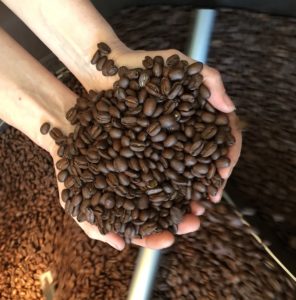Experience the art and science of coffee roasting with Cupper’s Coffee & Tea. Learn from our master roasters and savor the results in every cup.
Get ready to experience the art and science of coffee roasting! With every bean having its own unique characteristics, the perfect roast is no easy feat. Our master coffee roasters Josh and Jo are true artists. They know how to give each roast the love and attention it deserves.
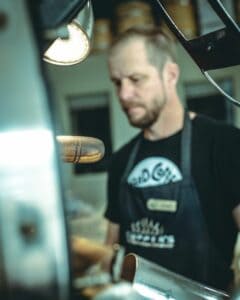
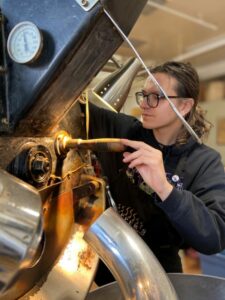
But the perfect roast isn’t just about timing and technique. It’s also about finding the ideal roast degree to bring out the full potential of each bean. Josh and Jo know how to strike the perfect balance to create an unforgettable cup of coffee. So sit back, relax, and savor the delicious results of our master roasters’ artistry!
Roasting coffee beans is a process that takes much training and practice to become a master. Each coffee bean is different from the next. This means that Josh needs to give every roast the same level of attention. The basics of coffee roasting involves applying heat to green coffee beans. This has to happen in a controlled setting and fashion. Roasting changes the chemical nature of the coffee bean. This is a process that continues even after the roasting is complete. This brings out the aromas and flavours trapped within the bean. Roasting coffee is 100% a science and an art.
Note: This article focuses on roasting coffee in a drum roaster, which is the roaster we use at Cupper’s Coffee & Tea.
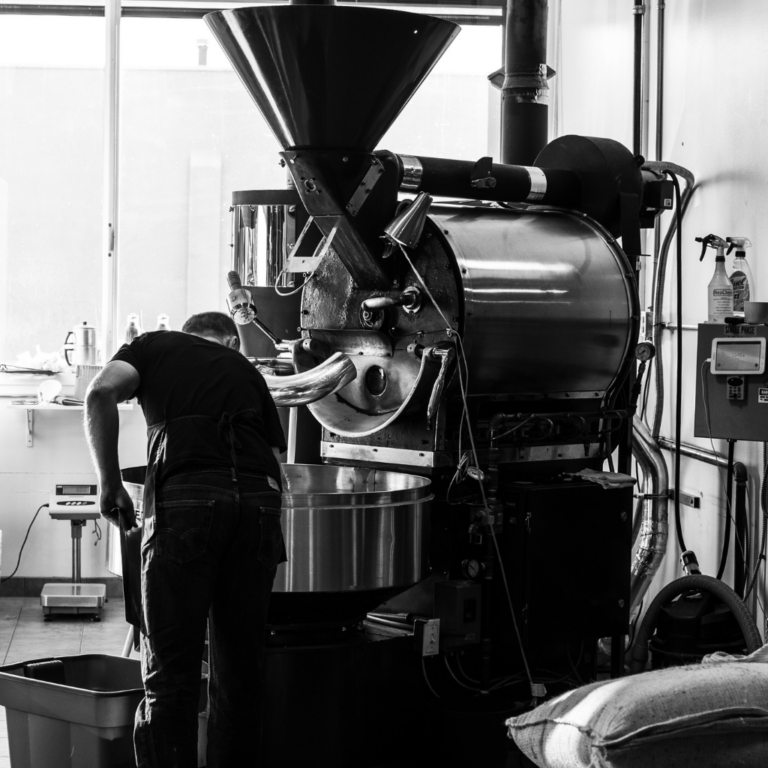
The Basics of Coffee Roasting
There are many factors and steps that go into a good coffee roast. These steps are standard across all drum roasters. Each is important, and has an impact on the final product. And as stated above, each is both a science… and an art!
Meet Cupper's Drum Coffee Roaster
The Charge Temperature
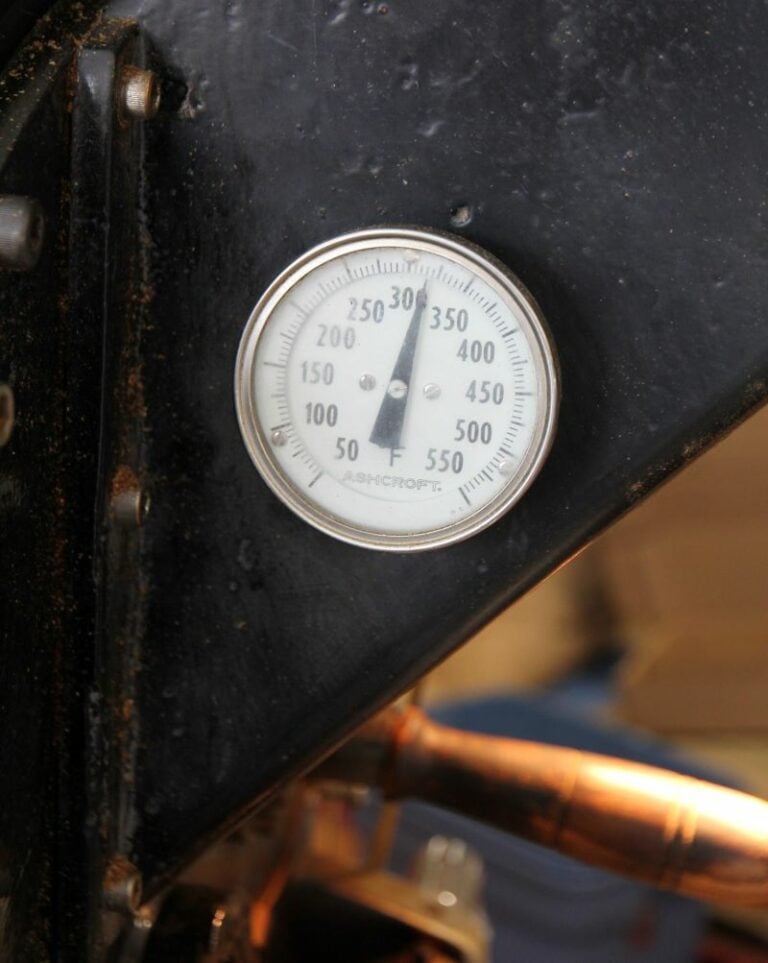
The charge temp has a huge effect on the complete roast time. One of the ways Josh controls the roast is by making sure the drum is set for the correct charge temp. He accounts for the correct temperature for the beans used and the size of roast he is planning.
Weighing the Green Beans
While the coffee roaster is heating, Josh or Jo weighs out the raw green coffee beans. The final weight of the coffee will be lower than the green beans once they’re roasted. Coffee loses a significant percentage of its moisture during the roasting process. But even though the weight of the beans is lower, the size of the bean actually almost doubles. The roasting process heats the moisture in the beans. This creates pressure inside the bean and causes the bean to expand. In the end, this results in a larger roasted bean that also weighs less than its starting green bean stage.
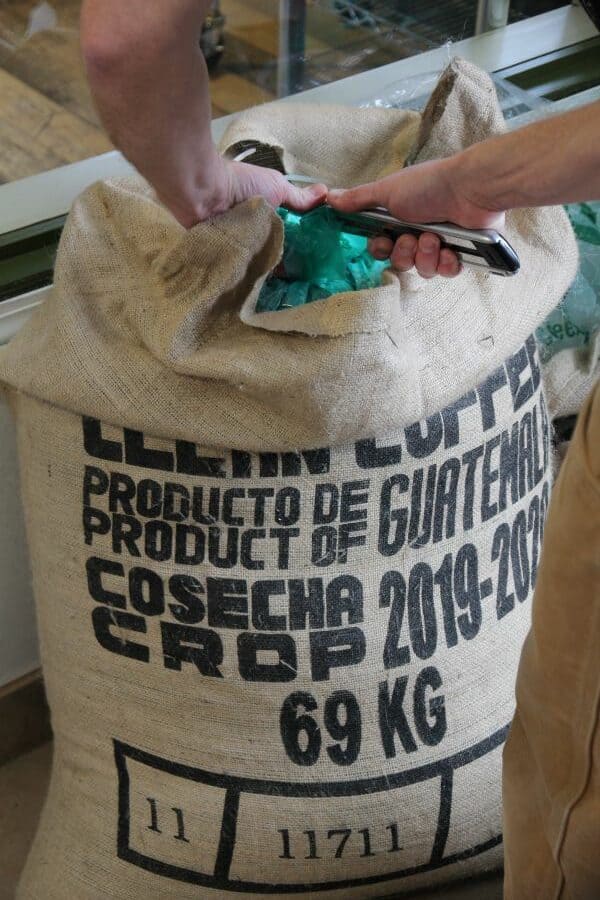
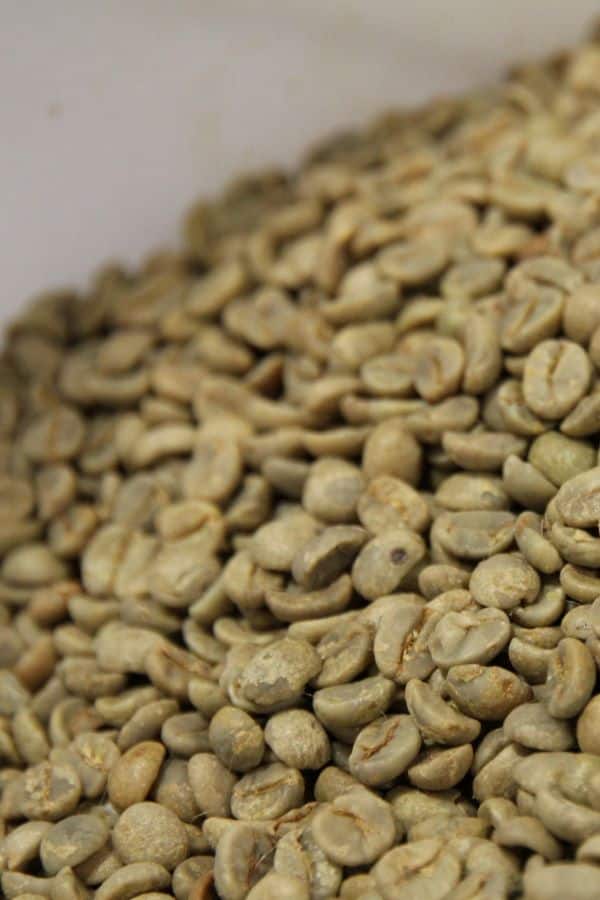
The Browning Stage
During the browning stage the green coffee beans go from their pale green colour to a pale yellow. Then they start to brown as they head towards the next stage of the roast.
First Crack
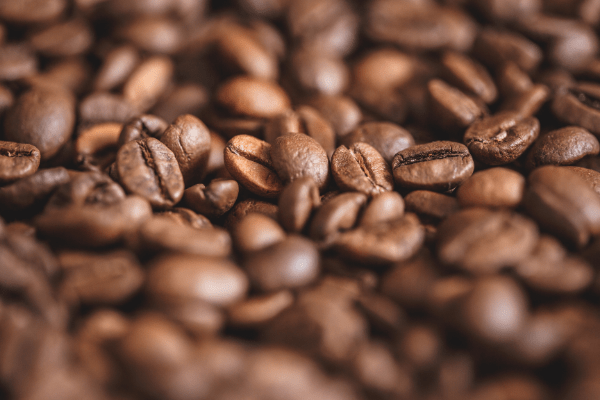
Second Crack
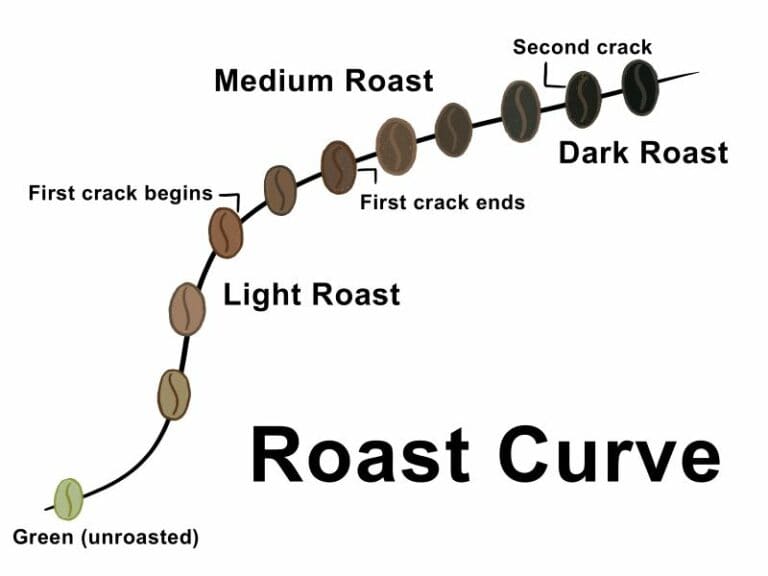
How Dark To Roast Coffee?
Roast degree is a crucial aspect of the roasting process. It impacts the flavour, aroma, and body of the coffee. The roast degree refers to the level of roasting the coffee beans undergo. There are 3 roast categories: light roast, medium roast, and dark roast. It’s important to pay close attention to the roast degree when roasting coffee. The degree of roast has a huge impact on the quality and flavour of the coffee. It’s essential to consider what degree of roast you want to end at before starting the roast.
Flavour Notes in Coffee
- Nutty
- Sweet
- Savoury
- Spicy
- Floral
- Fruity
- Woody
- and more!
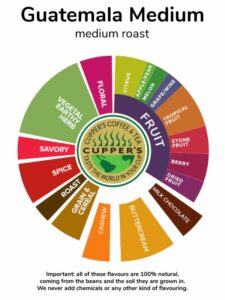
- where the coffee is grown
- the altitude of the area
- the season’s length
- the soil type
- the amount of rain and other weather factors and
- that season’s growing conditions.
Light Roast
We roast a light roast coffee until the beans reach a light brown colour. This type of coffee has a delicate flavour with bright acidity, and subtle fruit and floral notes. It’s an excellent choice for those who prefer a lighter, more complex coffee. This coffee remains in the roaster until first crack. The first crack is audible as the coffee drops in the cooling tray.
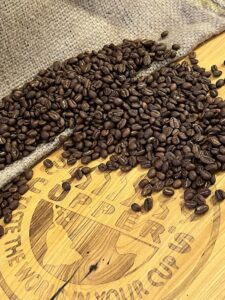
Medium Roast
We roast a medium roast coffee until the beans reach a medium brown colour. This type of coffee has a more robust flavour with a balance of acidity, sweetness, and bitterness. It’s a popular choice among coffee drinkers who want a well-rounded and balanced cup. We develop this coffee a little past the first crack, so there is no popping. It’s stopped several degrees Celsius before starting second crack.
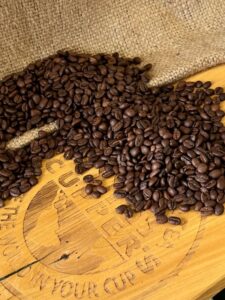
Dark Roast
We roast a dark roast coffee until the beans reach a dark brown colour. This type of coffee has a fuller body with notes of caramel, chocolate, and smokiness. During the roasting process the oils contained in the bean start tp come out. Darker roasted beans may have a slight oiliness to them. This is a good choice for those who prefer a stronger, more robust coffee.
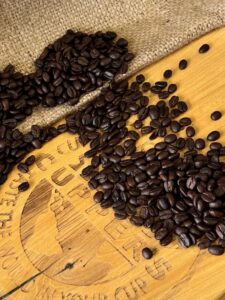
Other Factors In Roasting Coffee
So you thought you had all the information needed to go start roasting your own coffee. You’re well on your way… but there’s additional factors that play into this. Some can be controlled, others can not. Those you can’t control you can only manage or adapt to.
Airflow
When it comes to roasting coffee, airflow is a star player on the team. Airflow helps regulate the temperature and humidity levels in the roasting chamber. As the coffee beans roast, they give off steam and moisture. That moisture needs to escape, or else the beans could end up overcooked, steamed, and ruined. Airflow whisks away the moisture and keeps the temperature optimal for roasting.

We manage airflow by our venting on the top of our roaster drum. By adjusting the airflow, we can control how fast the moisture evaporates from the beans. This fine-tuning allows for the creation of unique coffee flavours that we all know and love. Airflow might seem like a small detail, but it plays a big role in the coffee roasting game.
Cooling
Once Josh knows that the coffee is seconds before its peak flavour he dumps the roast into the cooling tray. Because the beans are emitting heat they will continue to cook until they cool. It seems contrary, but the coffee must drop mere seconds before it’s reached its peak. Think of it like cooking a beef roast in the oven. You want to pull the roast out before it’s done because it will continue to cook after removing it. If you want a medium done roast, you need to pull it out of the oven while still medium rare. Surprisingly, coffee roasting works the same way.
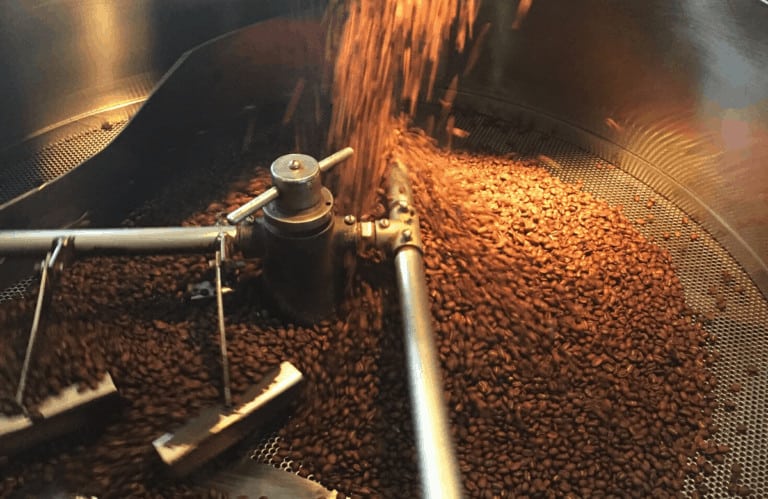
Once dropped, the fan under the perforated cooling tray draws cold air through the hot beans. The coffee beans remain in motion as the agitation arm stirs them. If a batch of coffee isn’t cooled with this agitation it can result in an uneven roast. The coffee beans may even become brittle and taste stale. Fortunately, it doesn’t take long to cool the coffee beans. They’re done cooling and are put in a bin before the next roast is ready for the cooling tray.
Resting
After roasting, coffee beans need to rest to off-gas and develop their flavours and aromas in full. During the roasting process, roasting the high heat causes the cell walls in the beans to break down. This releases many compounds, including carbon dioxide (CO2) gas. These compounds contribute to the flavour of the coffee. If the CO2 gas is still trapped inside the bean it can interfere with this flavour. This is because the gas can react with the compounds in the coffee, producing a bitter and sour taste.
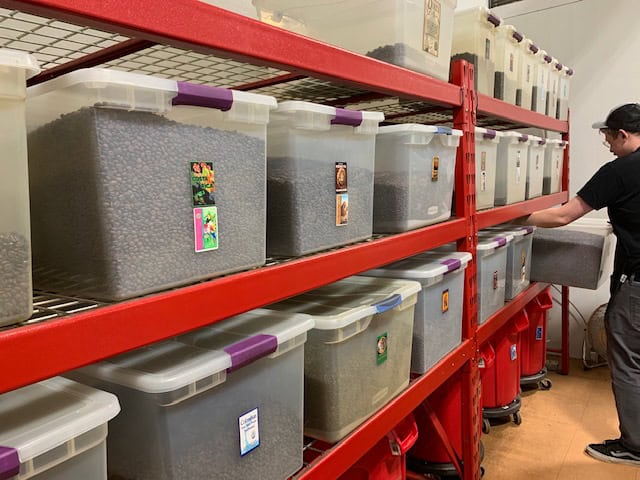
By letting the coffee rest in bins after roasting, the CO2 gas can escape. This creates a more stable and predictable environment for the flavours to develop. We feel it’s best to wait at least 24 hours after roasting is complete. Thus we ensure a smoother, better well-rounded cup of coffee. This is one of the reasons we never cup coffee the same day it’s roasted. We also try to avoid grinding the coffee within 24 hours of roasting to really give it the time it deserves.
How Fresh is Fresh?
We go to a lot of effort to source the best green coffee beans we can buy. It’s also important that all our coffees are fresh roasted. The flavour of a coffee bean keeps developing for a few days after roasting. In fact, according to many experts the “sweet spot” for coffee begins on the 4th day after roasting.
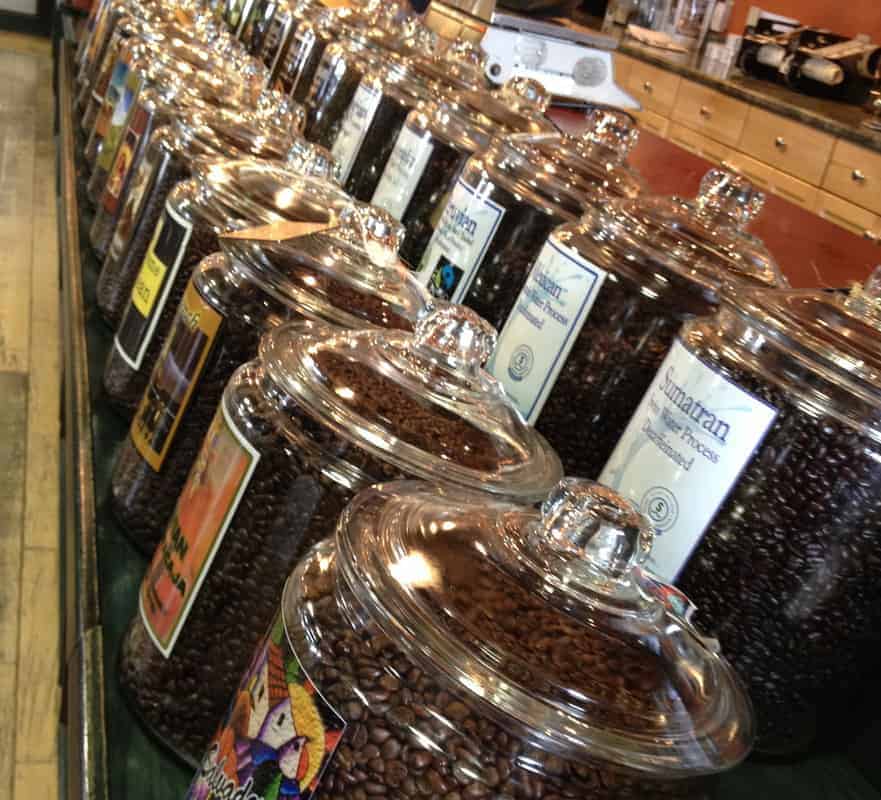
Our Coffee Roaster
Our custom built Coffee Roaster takes the fine art of coffee roasting to a whole new level. At Cupper’s, we “cup” (taste-test) coffee from roasters all over Canada and the U.S. to make sure we stay at the top of our game. (To learn more about cupping coffee, check out our article Cupping Coffee: The Ultimate Tasting Guide.) With pride, we can say our coffee is richer, more flavourful, and better balanced than most others.
Our roasting equipment is top-notch, and so are our master roasters, Josh and Jo. A lot of roasting equipment doesn’t give heat and airflow control to a precise enough level. (Think of the difference between a blow torch and a gas stove.) So, our answer was to build a custom coffee roaster that is “tricked out” to meet our super-high standards. To help us, we enlisted a friend with a PhD in thermal dynamics, and a local fabricator. Thus the concept for our roaster was born.
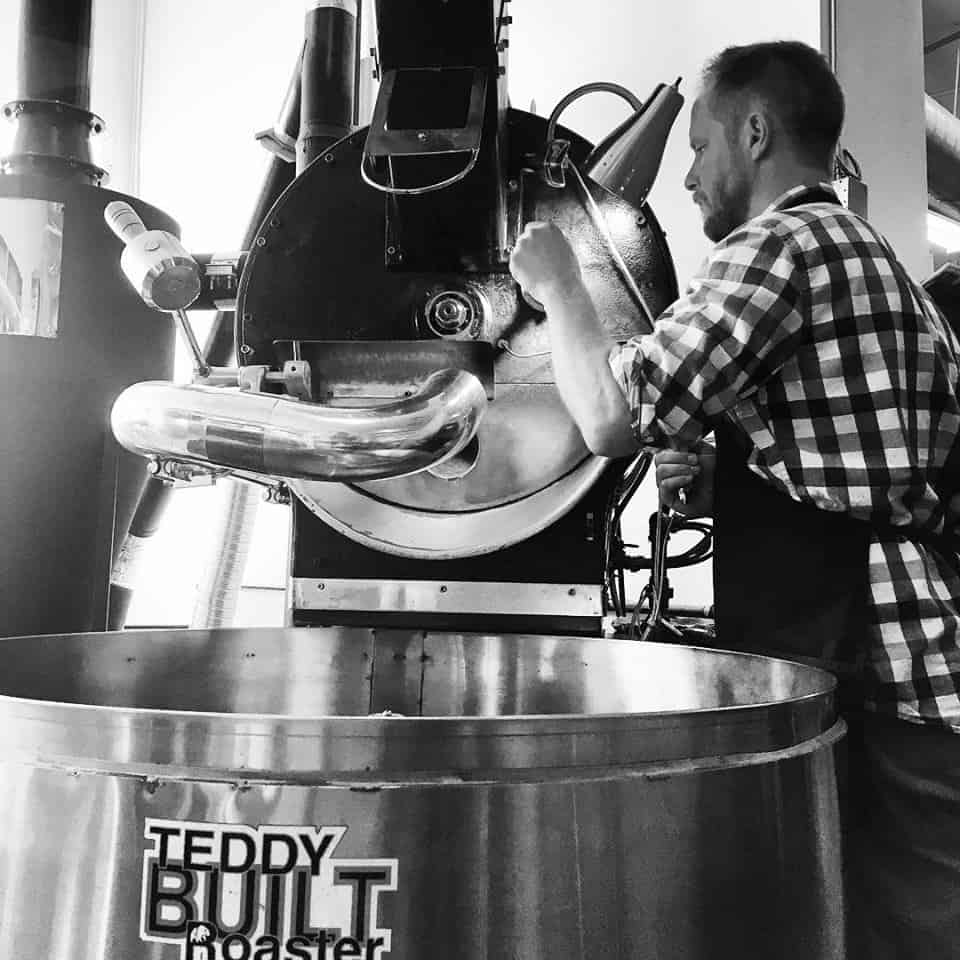
It was all very complicated, and got a little wild there for a while, but our guys knew what they were doing. There was a lot of tinkering, figuring, reconfiguring, and resetting! We even had them slow down the RPM (rotations per minute) of the drum to increase the sweat-time of the coffee. These small improvements in our roaster translate into BIG improvements in our coffee. We can refine our roasts in ways that other roasters can’t match.
The Art & Science of Roasting
Coffee roasting is a true art and real science. Roasting coffee beans is a process that takes a lot of training and practice to become a master. Each coffee bean is different from the next. This means that our master roasters need to give every batch the same level of attention. Josh and Jo take great care in ensuring that each bean receives the love it deserves. These skilled roasters understand the unique characteristics of each bean. They work hard to bring out the best in every batch. The result is an unforgettable cup of coffee that you can savor and enjoy.

We roast fresh coffee every day. If you’re in the store and you’re interested, come and watch Josh and Jo create magic. Our success is a testament to the artistry of our master roasters, coffee roaster, and the beans we source.
